Abstract
The pathogenicity of mouse hepatitis virus (MHV-1) was studied following treatment with triolein and cortisone which, respectively, stimulated and suppressed phagocytic activity of the reticuloendothelial system (RES) as measured by clearance of colloidal carbon. When inoculated i.p., triolein moderately enhanced RES activity of germfree mice, while exerting no significant effect in conventional mice. In both groups of mice, however, protection was found against an i.p. challenge of virus. Cortisone greatly suppressed RES activity and significantly increased susceptibility of germfree and conventional mice to MHV-1. Triolein also was found to protect mice against the combined challenge of cortisone plus virus. However, triolein, whether injected i.p. or i.v., failed to protect against an i.v. challenge of virus. These data support two conclusions: (1) triolein exerted its protective effect at some site other than the macrophages of the liver; (2) protection against MHV-1 infection following triolein treatment was not related to the carbon clearing activity of the RES.
Full text
PDF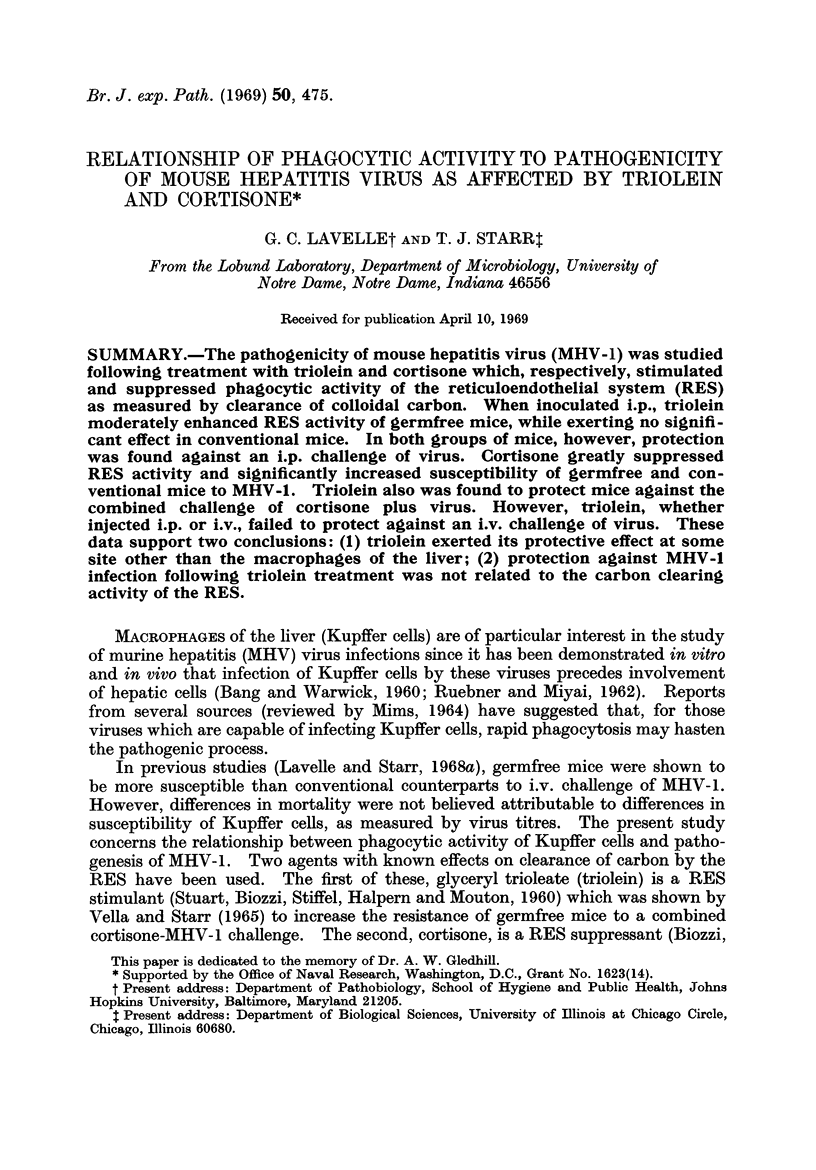
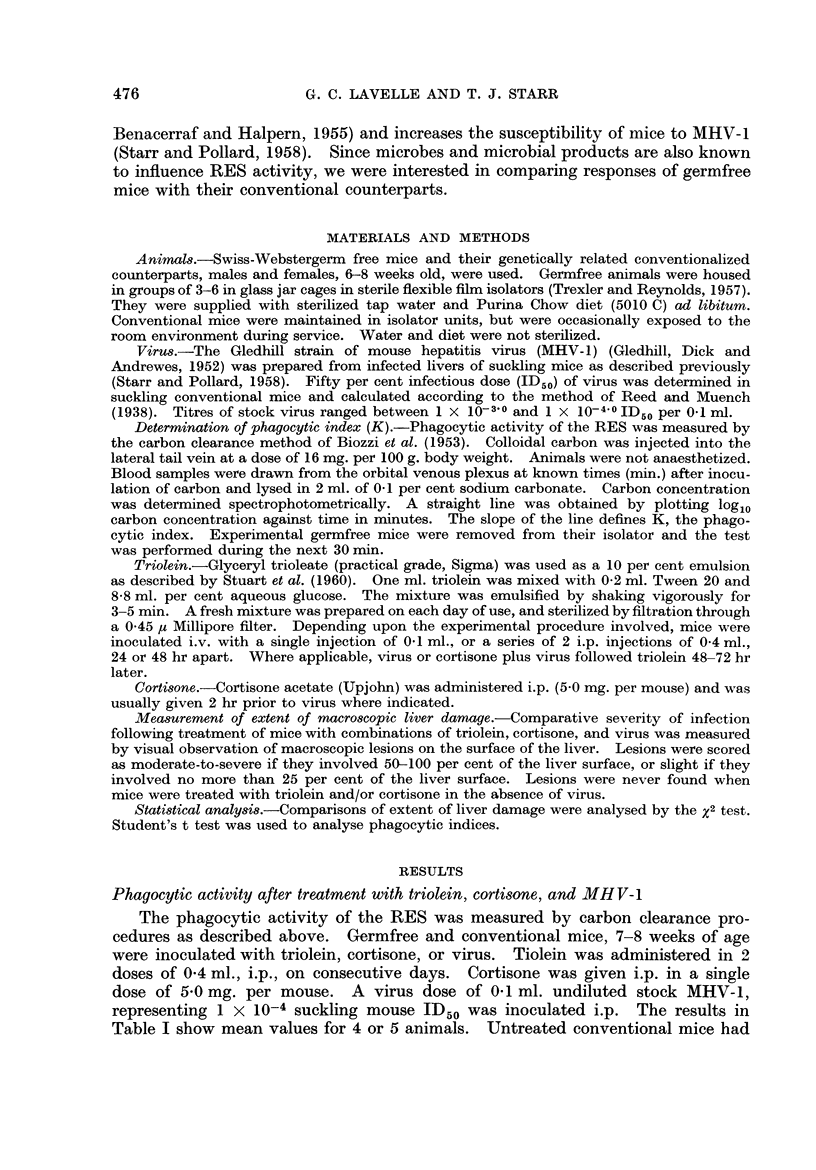
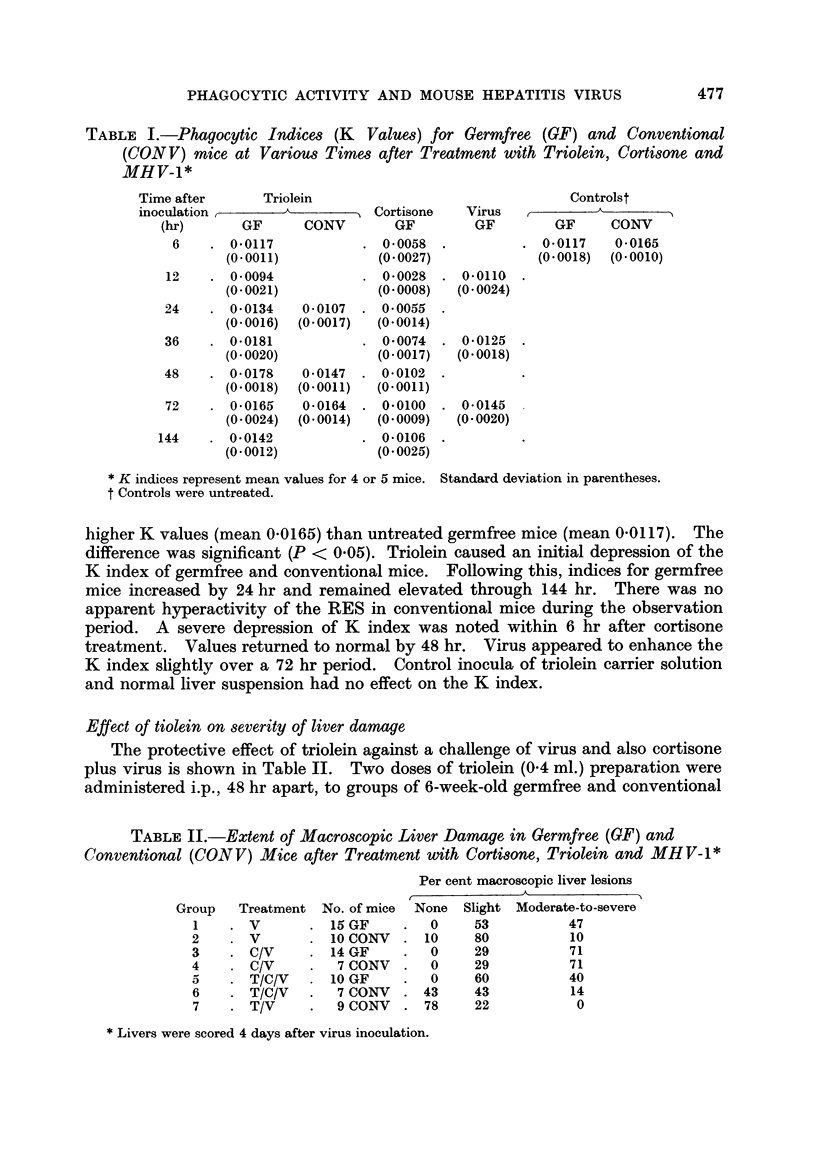
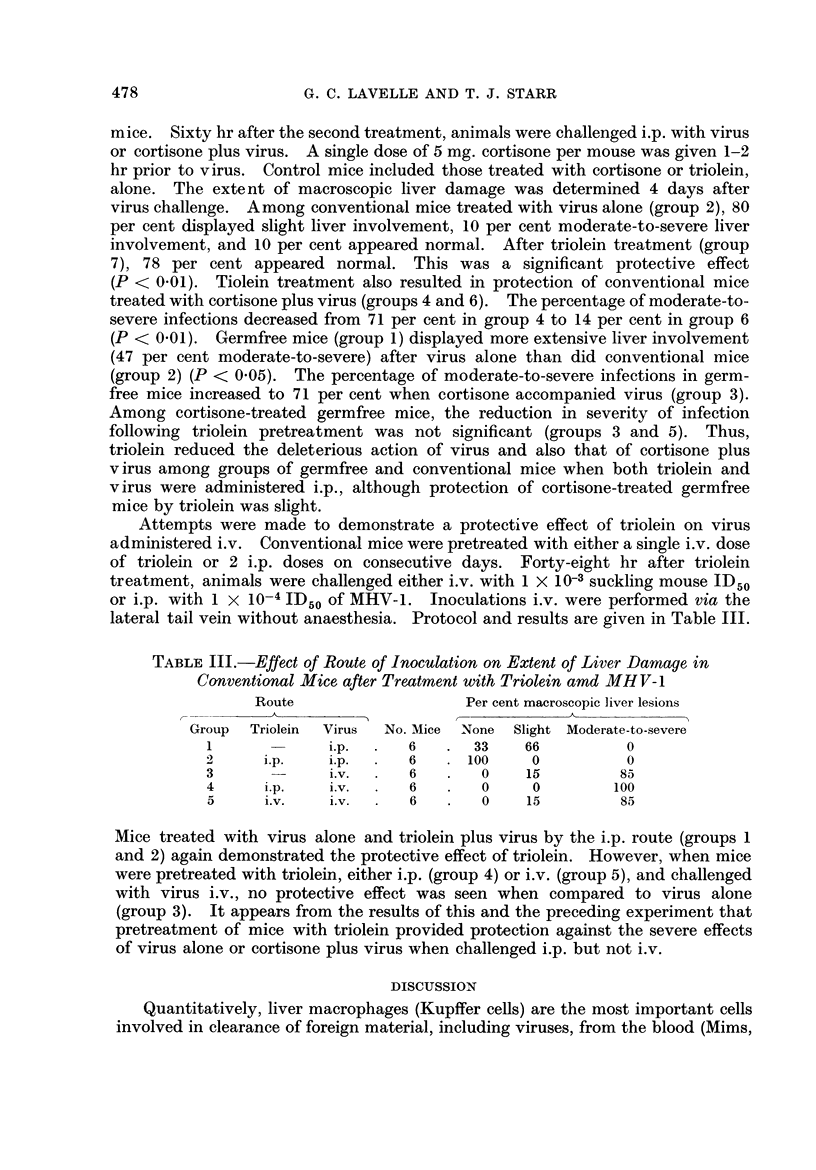
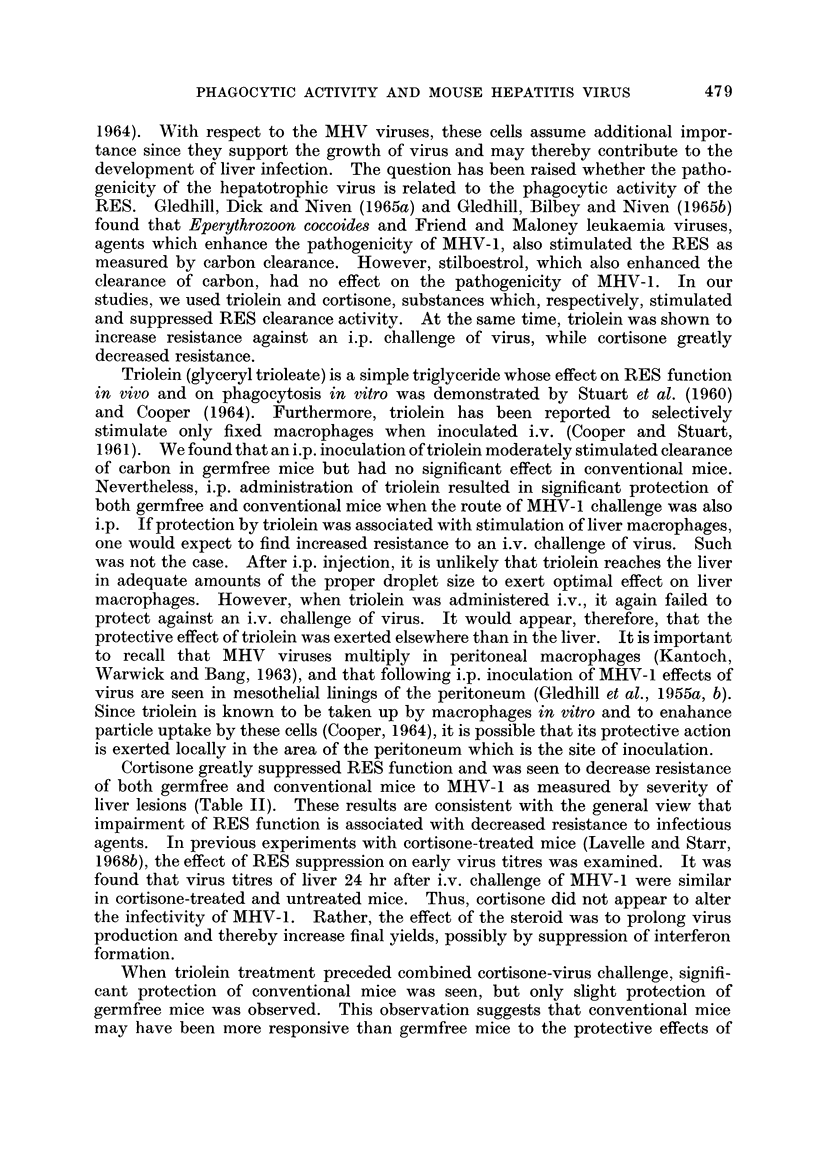
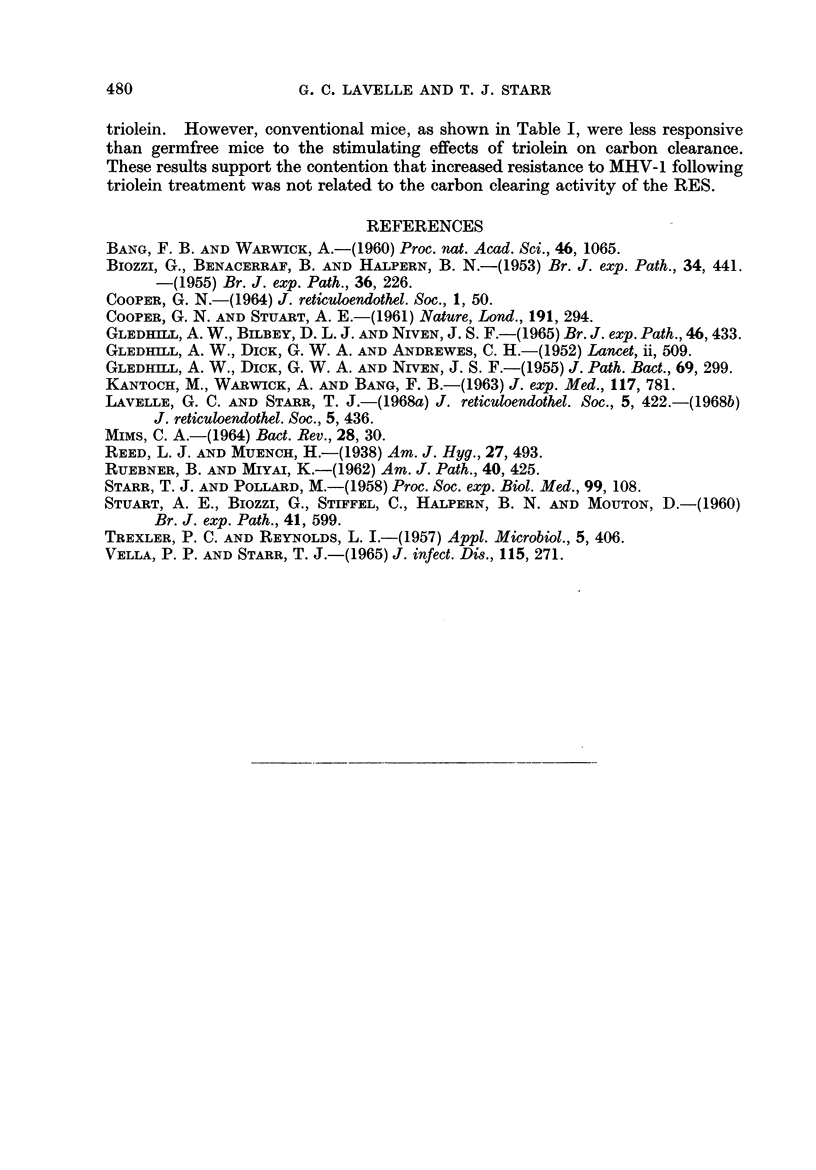
Selected References
These references are in PubMed. This may not be the complete list of references from this article.
- BIOZZI G., BENACERRAF B., HALPERN B. N. Quantitative study of the granulopectic activity of the reticulo-endothelial system. II. A study of the kinetics of the R. E. S. in relation to the dose of carbon injected; relationship between the weight of the organs and their activity. Br J Exp Pathol. 1953 Aug;34(4):441–457. [PMC free article] [PubMed] [Google Scholar]
- Bang F. B., Warwick A. MOUSE MACROPHAGES AS HOST CELLS FOR THE MOUSE HEPATITIS VIRUS AND THE GENETIC BASIS OF THEIR SUSCEPTIBILITY. Proc Natl Acad Sci U S A. 1960 Aug;46(8):1065–1075. doi: 10.1073/pnas.46.8.1065. [DOI] [PMC free article] [PubMed] [Google Scholar]
- GLEDHILL A. W., ANDREWES C. H., DICK G. W. A. Production of hepatitis in mice by the combined action of two filterable agents. Lancet. 1952 Sep 13;2(6733):509–511. doi: 10.1016/s0140-6736(52)90292-4. [DOI] [PubMed] [Google Scholar]
- GLEDHILL A. W., DICK G. W., NIVEN J. S. Mouse hepatitis virus and its pathogenic action. J Pathol Bacteriol. 1955 Jan-Apr;69(1-2):299–309. doi: 10.1002/path.1700690138. [DOI] [PubMed] [Google Scholar]
- Lavelle G. C., Starr T. J. Interferon response and age-related resistance of germfree mice to mouse hepatitis virus. J Reticuloendothel Soc. 1968 Oct;5(5):422–435. [PubMed] [Google Scholar]
- RUEBNER B., MIYAI K. The Kupffer cell reaction in murine and human viral hepatitis, with particular reference to the origin of acidophilic bodies. Am J Pathol. 1962 Apr;40:425–435. [PMC free article] [PubMed] [Google Scholar]
- STARR T. J., POLLARD M. Susceptibility of cortisone-treated mice to infection with mouse hepatitis virus. Proc Soc Exp Biol Med. 1958 Oct;99(1):108–110. doi: 10.3181/00379727-99-24263. [DOI] [PubMed] [Google Scholar]
- TREXLER P. C., REYNOLDS L. I. Flexible film apparatus for the rearing and use of germfree animals. Appl Microbiol. 1957 Nov;5(6):406–412. doi: 10.1128/am.5.6.406-412.1957. [DOI] [PMC free article] [PubMed] [Google Scholar]
- VELLA P. P., STARR T. J. EFFECT OF X RADIATION AND CORTISONE ON MOUSE HEPATITIS VIRUS INFECTION IN GERMFREE MICE. J Infect Dis. 1965 Jun;115:271–277. doi: 10.1093/infdis/115.3.271. [DOI] [PubMed] [Google Scholar]


